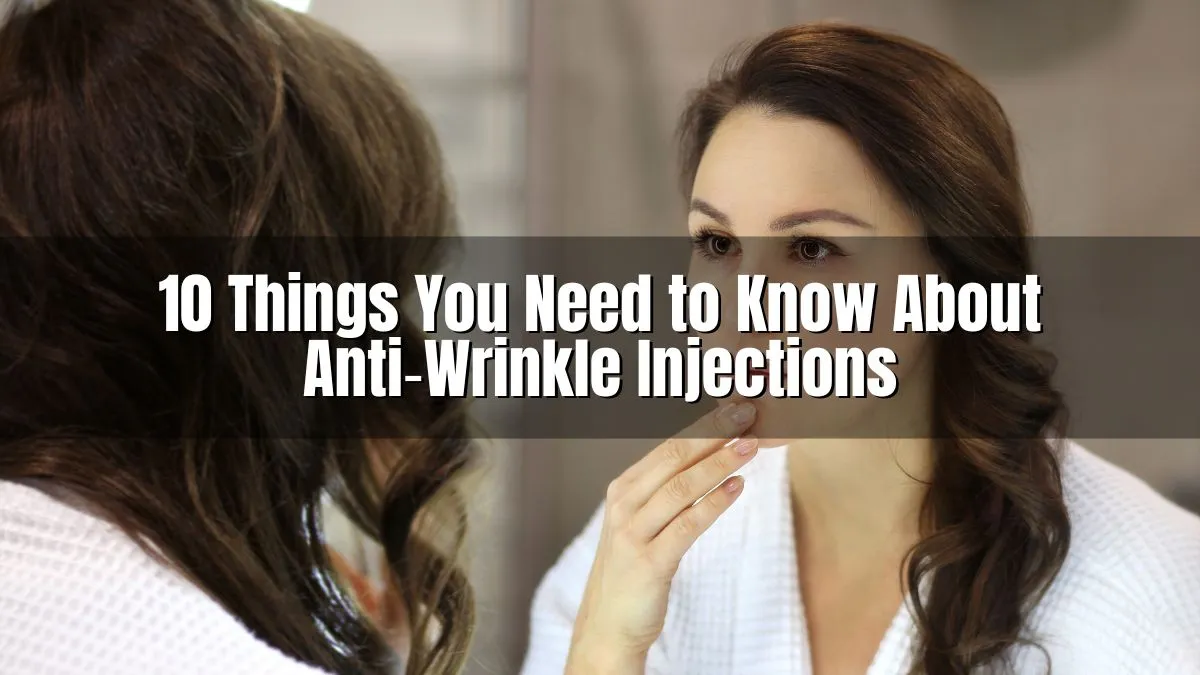10 Things You Need to Know About Anti‑Wrinkle Injections

Understanding how anti-wrinkle injections work, what to expect, and key safety facts before your treatment.
Anti‑wrinkle injections (including botulinum toxin formulations) are a prescription-only medical treatment administered to relax dynamic facial muscles and soften expression lines. At DA Aesthetics in Buckinghamshire, treatments are always delivered following thorough in-person clinical assessment. This article provides ten factual insights into these treatments, UK legal considerations, and why in-person prescribing is mandatory under current professional regulations.
Table of Contents
Toggle1. How the Treatment Works
Anti‑wrinkle injections work by inhibiting muscle activity in areas such as the forehead, glabellar (frown) region, and crow’s‑feet. This reduces visible lines caused by repeated facial expression. You can expect to see the full effect within 10 to 14 days, with results usually lasting between three to six months, depending on your body’s response.
2. Not for Volume Enhancement
These injections relax muscle movement—they do not add volume. Conditions better treated with volume-based methods include cheek hollowing, deep folds, or under-eye hollows. Dermal fillers or skin-enhancing treatments such as polynucleotides are more appropriate for these concerns.
3. In-Person Consultations Are Required by NMC
Under NMC guidance effective from 1 June 2025, nurse and midwife prescribers must conduct in-person consultations before prescribing anti‑wrinkle injections. Remote prescribing via phone, video, email or third-party requests is prohibited. This aligns UK nursing standards with those of the GMC and GMC-regulated prescribers.
4. Advertising Restrictions in the UK
Anti‑wrinkle injections are prescription-only medicines (POMs). UK advertising rules prohibit both direct and indirect promotion of POMs—including terms like “anti‑wrinkle injections”—unless mentioned only within the context of a consultation.
This means clinics cannot promote them in ads, price lists, social media, or before-and-after images. The focus must remain on promoting consultations rather than the medication itself.
5. Safety Relies on Professional Assessment
Treatment safety depends entirely on in-depth facial assessment, medical history review, and technique. Minor side effects—such as redness, bruising, or mild swelling—are possible. Rare complications like drooping eyelids or asymmetry occur infrequently and can be managed appropriately in regulated settings.
6. Results Are Subtle and Designed to Preserve Natural Movement
One of the most common concerns clients express is whether they’ll look “frozen” or unnatural after treatment. When administered with care, anti-wrinkle injections are intended to soften lines—not eliminate expression.
Here at DA Aesthetics, we prefer a gentle, well-balanced method tailored to natural-looking results. The goal is to reduce the appearance of overactive muscle movement while preserving your ability to express naturally. Most clients simply appear more rested, rather than noticeably altered. Treatment plans are always adjusted to suit your facial anatomy and preferences.
7. Comparisons with Dermal Fillers
Anti‑wrinkle injections are designed to reduce expression lines. Dermal fillers—often hyaluronic acid-based—are used to restore volume in areas such as cheeks, lips, or jawline. These treatments are complementary rather than interchangeable and can be combined safely within well-planned treatment protocols.
8. Comparisons with Chemical Peels
Chemical peels aim to improve skin tone and surface texture by exfoliating layers of the epidermis. Anti‑wrinkle injections, on the other hand, reduce movement-based lines. Deep or medical-grade peels can increase skin sensitivity, so timing and sequencing must be considered carefully in tandem with muscle-relaxing treatments.
9. Treatment Planning and Aftercare
Before treatment, you will receive a detailed in-person consultation to review your medical history, expectations and targets. Following injection, advice typically includes avoiding strenuous exercise, extreme heat or alcohol for 24 hours, and attending follow-up reviews. This helps ensure best outcomes and safety.
10. Maintenance and Treatment Duration
Results are temporary. Repeated treatments every three to six months are common and are best spaced to allow muscles to adapt gradually. Over time, movement patterns may settle, potentially extending the duration of effect or reducing intensity needed.
Frequently Asked Questions (FAQs)
Yes. As of 1 June 2025, UK nursing prescribers must meet clients in person before issuing prescriptions for anti–wrinkle injections in compliance with NMC regulations.
If a clinic offers only prescription-only treatments, using the term “anti‑wrinkle injections” may be interpreted as indirect promotion of a POM and breach ASA/CAP rules. It is permissible only when used in context with consultations for both prescription and non-prescription injectable treatments.
You might notice some slight bruising or tenderness in the treated area, which is completely normal and short-lived. Serious complications are rare. Treatment should always be carried out by qualified professionals with appropriate medical training and safety protocols.
Yes. These treatments serve different purposes and can be complementary. However, careful planning is essential—for example, avoiding chemical peels immediately before or after muscle-relaxing injections to reduce risks of irritation.
Over time, the effects will wear off naturally as normal muscle movement slowly comes back. Lines may persist longer than before due to treatment history. Future treatment intervals may be extended based on response.